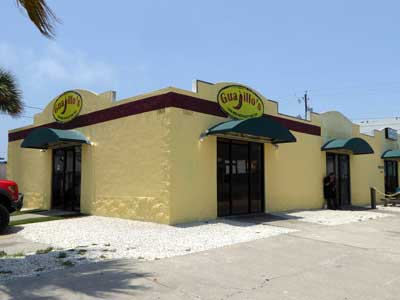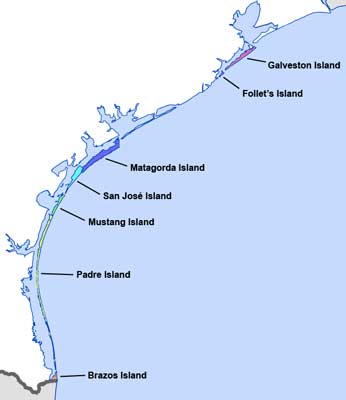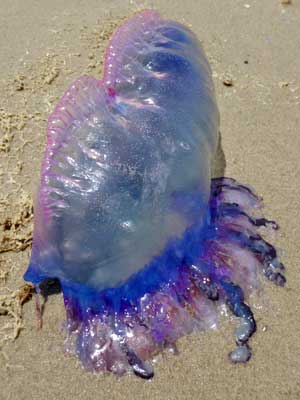It was a 2 hour drive to Corpus Christi. The scenery got dramatically greener the closer we got to the coast.
Once in town, we cruised past some of the nicer homes on Ocean Drive.
We crossed the 4.5 mile long John F Kennedy Memorial Causeway, a raised roadway opened in 1950 and originally called the North Padre Island Causeway. The bridge was added in 1973 to deal with increased traffic.
We were now on Padre Island. Before we left town and entered into the nature reserves, we made a quick lunch stop at a quirky little place called Guajillo's.






Mmmm.... delicious! I had mole verde (a sauce made from roasted pumpkin seeds, cilantro, lettuce and chili poblano) served over green zucchini.
Padre Island is part chain of islands known as the Texas barrier islands (so-called because they protect the mainland from direct storm tides) which run up the coast. On one side is the Gulf of Mexico, while on the other is a string of protected estuaries. Our plan for the day was to visit the nearest two: Padre and Mustang.

The seven barrier islands (from north to south) are Galveston Island, Follet's Island, Matagorda Island, San Jose Island, Mustang Island, Padre Island and Brazos Island. (click image for a larger view)
We continued south down the island, entering Padre Island National Seashore. The island is about 113 miles long (making it world's longest undeveloped stretch of barrier island), although it was divided into a north and south part in 1964 due to channel dredging. It's considered a relatively young island, having formed as a submerged sandbar some 4,500 years ago. Wind, waves and storms continue to reshape it.
It was first owned by Spain until 1820, then Mexico until 1836, then the Republic of Texas and finally the United States when Texas became a state in 1845. It has been known as La Isla Blanca (White Island), Isla de los Malaguitas (Island of the Malaquites, a native tribe), Isla de Santiago, and finally Padre Island (or Father Island), after Padre Jose Nicolas Balli, a missionary priest born in Mexico who settled here around 1804.
The area is oddly both protected but also not. Even after it was claimed a National Seashore in 1962, it was extensively ranched until 1970. It is also widely used for tourism (including sports such as fishing and windsurfing). Up until 1960, it was also used as a navy bombing range. Oil and natural gas drilling is currently allowed within the park.

We drove all the way down to the Malaquite visitor center.





From here, we took a long stroll south along the beach to Park Road 22 (where the park road ends at the sand).


A warning about jellyfish... well, we weren't planning on swimming so that clearly won't be a problem. (cue ominous foreshadowing music)






A Laughing gull with a Sanderling


Brown pelicans


A type of Tern
Whoa! The sand was completely littered with jellyfish that had washed ashore! Suffice to say I didn't touch any to see if they still could sting. In spite of their name, jellyfish are not fish. They are invertebrates related to sea anemones and corals.


The smaller ones were were sea nettles. They have a central rust-colored dot with side stripes that radiate out from it. They pack a powerful punch.




The larger ones were actually Portuguese man-of-war (... man-of wars? men-of-war?? No one can seem to agree). While similar in appearance and being somewhat related, they are not true jellyfish. Instead, they are a species of siphonophore. Jellyfish are single organisms capable of swimming and moving themselves through water. Siphonophores are a colony of organisms (zooids) which can only drift through the water, pushed about by the whim of the currents... although the man-of-war can rock from side to side to keep itself wet as well as deflate its gas-filled flotation bubble in order to temporarily submerge itself to avoid a surface attack.

The man-of-war is made up of four organisms, each with its special function... hunting (tentacles), digestion, floating and reproduction. The long tentacles that hang below it can get up to 60 feet long and are covered with thousands of stinging cells. This can be extremely painful!


They apparently come in various shades of pinks, purples and blues.


Where the park road ends at the sand
We then drove over to Laguna Madre on the west side. This is one of six hypersaline (saltier than the ocean) coastal lagoons in the world.


It's a popular spot for windsurfing.